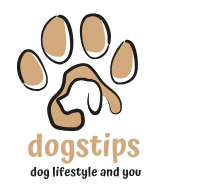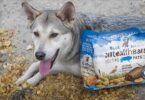As a pet owner, you might have wondered if your furry friend can eat raw chicken. The answer is yes, but it comes with important considerations. Raw chicken can be a nutritious treat when handled properly, but it also carries risks like bacterial contamination.
Feeding your dog raw chicken can provide essential protein and support their overall health. However, it’s crucial to ensure the chicken is sourced from a trusted supplier and handled safely to minimize the risk of bacteria like salmonella.
Before making any changes to your dog’s diet, consult with a veterinarian to ensure it aligns with their specific needs. Proper handling and storage are key to keeping your pet safe and healthy.
Understanding the Raw Chicken Diet for Dogs
Many pet owners are curious about the raw chicken diet for their dogs, wondering if it’s a safe and healthy choice. This diet has gained popularity due to its perceived health benefits, but it’s important to understand both the pros and cons before making a decision.
Why Choose a Raw Diet?
Proponents of raw diets argue that they mimic a dog’s natural eating habits in the wild. Raw chicken provides essential nutrients like protein, vitamins, and minerals that are often lost in processed foods. Some owners report improvements in their dog’s dental health and digestion when switching to raw meat.
Common Misconceptions About Raw Feeding
One common myth is that raw chicken is inherently dangerous. While it’s true that raw chicken can contain bacteria like Salmonella, proper handling and storage can minimize these risks. Many veterinarians caution against raw diets, but others argue that the benefits outweigh the risks when managed correctly.
It’s also important to address the misconception that all raw diets are the same. The quality of the chicken and how it’s prepared can significantly impact your dog’s health. Always source raw chicken from trusted suppliers and handle it safely to reduce the risk of bacterial contamination.
In the next section, we’ll explore the safety considerations of feeding raw chicken to your dog and provide practical tips for implementing a raw diet safely.
Safety Considerations When Feeding Raw Chicken
Feeding your dog raw chicken can pose risks, particularly from bacteria like Salmonella and Campylobacteriosis. These pathogens can lead to serious health issues in both dogs and humans. However, with proper handling, you can minimize these risks effectively.
Managing Bacterial Risks: Salmonella & Campylobacteriosis
Dogs, especially those with strong immune systems, can often handle bacteria like Salmonella and Campylobacteriosis due to their acidic stomachs and short digestive tracts. However, puppies, older dogs, or those with weakened immunity are more vulnerable. Symptoms of infection may include vomiting, diarrhea, fever, and lethargy.
Essential Hygiene and Handling Practices
To keep your dog safe, always source raw chicken from trusted suppliers and store it properly. Freeze the chicken until you’re ready to use it, and thaw it in the fridge to prevent bacterial growth. Wash your hands thoroughly after handling raw chicken, and clean all surfaces and your dog’s bowls with a pet-safe disinfectant.
Leftover raw chicken should not be stored for more than 24 hours in the fridge. If you notice any signs of illness in your dog, consult your veterinarian immediately. Proper hygiene and handling can significantly reduce the risk of bacterial contamination, ensuring a safe and healthy experience for your pet.
can dogs eat raw chicken? Debunking Myths and Risks
When it comes to feeding your dog raw chicken, there are many myths and misconceptions that can make the decision confusing. While some believe raw chicken is inherently dangerous, others swear by its benefits. The truth lies in understanding the risks and how to manage them effectively.
One of the most common myths is that raw chicken is always unsafe due to bacteria like Salmonella. While it’s true that raw chicken can carry bacteria, these risks can be significantly reduced with proper handling and storage. Dogs, especially those with healthy immune systems, are less likely to get sick from bacteria like Salmonella due to their acidic stomachs and short digestive tracts.
Another misconception is that all raw chicken is created equal. The quality of the chicken and how it’s prepared play a huge role in your dog’s safety. Sourcing raw chicken from trusted suppliers and handling it safely can minimize the risk of bacterial contamination. For example, freezing raw chicken before use and thawing it properly can help kill harmful pathogens.
It’s also important to address the myth that raw chicken diets are unbalanced. A well-planned raw diet can provide all the necessary nutrients your dog needs. This includes a mix of meat, bones, and organs in appropriate portions. However, it’s crucial to consult with a veterinarian to ensure the diet is tailored to your dog’s specific needs and health status.
While raw chicken can be a healthy choice, it’s not without risks. Dogs with weakened immune systems, such as puppies or older dogs, may be more susceptible to bacterial infections. Additionally, improper handling of raw chicken can pose risks not only to your dog but also to you and your family.
In conclusion, feeding your dog raw chicken is not inherently dangerous, but it does require careful consideration and proper handling. By debunking myths and understanding the risks, you can make an informed decision that works best for your pet. Always consult with a veterinarian to ensure your dog’s diet is safe and balanced.
Nutritional Benefits of Raw Chicken for Dogs
Raw chicken offers a wealth of nutritional benefits for dogs, making it a popular choice for pet owners seeking a natural diet. It’s packed with essential nutrients like protein, vitamins, and minerals that support overall health and well-being.
Key Nutrients and Their Functions
Raw chicken is an excellent source of protein, which is vital for muscle maintenance and growth. It also contains important vitamins like Vitamin A and B12, which support healthy skin and energy levels. Minerals such as phosphorus and calcium are crucial for strong bones and teeth.
Natural enzymes in raw chicken aid digestion, while glucosamine and chondroitin support joint health. A balanced raw diet can lead to improvements in skin health and coat shine, as noted in studies by the University of California, Davis.
Feeding raw chicken bones in moderation can provide additional benefits, as they contain marrow rich in nutrients. However, always ensure they are safely prepared to avoid risks.
A well-planned raw diet should include a variety of ingredients to ensure your dog gets all the necessary nutrients. Consult with a veterinarian to create a balanced meal plan tailored to your dog’s needs.
Proper Handling, Storage, and Preparation Tips
When it comes to feeding your dog raw chicken, proper handling and storage are essential to ensure safety and minimize risks. By following these simple steps, you can create a safe and healthy feeding routine for your pet.
Start by storing raw chicken in the freezer until you’re ready to use it. When thawing, always do so in the refrigerator to prevent bacterial growth. This method ensures the chicken stays fresh and safe for your dog.
Portion your dog’s meals carefully to avoid leftovers. Uneaten raw chicken should be discarded after an hour at room temperature to prevent bacteria from multiplying. This practice helps keep your dog’s food fresh and safe.
After each feeding, wash your hands thoroughly and clean your dog’s bowls and any surfaces with a pet-safe disinfectant. This step is crucial to prevent cross-contamination and keep your kitchen clean.
Always handle raw chicken safely to avoid spreading bacteria. Keep raw chicken and other foods separate, and wash utensils and cutting boards with soap and warm water after use. This minimizes the risk of bacterial spread in your kitchen.
Before making any changes to your dog’s diet, consult with a veterinarian to ensure it aligns with their specific needs. Proper handling and storage are key to keeping your pet safe and healthy.
Choosing Quality Raw Chicken Sources for Your Pet
When it comes to selecting raw chicken for your dog, the source matters. High-quality raw chicken ensures your pet gets the nutrients they need while minimizing risks. Look for trusted farms or companies that prioritize transparency and safety.
A good raw chicken source should provide clear information about where the chicken comes from and how it’s handled. This transparency helps you make informed decisions about your dog’s diet. Pasture-raised chickens are often a better choice as they tend to have fewer additives and more natural living conditions.
Check for certifications and labels that ensure the chicken meets high standards. A balanced diet is crucial, so opt for products that have been vet-approved. For more guidance on creating a balanced raw diet, visit our complete guide.
Quality raw chicken can reduce health risks and ensure your dog gets the nutrients they need. Always handle the chicken safely and store it properly to keep your pet healthy.
Balancing a Raw Diet for an Optimal Canine Health
Creating a balanced raw diet for your dog involves careful planning to ensure all nutritional needs are met. A well-structured meal plan is essential for maintaining your dog’s overall health and well-being.
Incorporating Safe Bone Feeding Practices
Bones play a crucial role in your dog’s diet, providing essential calcium and phosphorus. Raw chicken bones are safer than cooked ones as they are less likely to splinter. However, it’s important to avoid small bones that could pose a choking hazard or cause digestive issues.
When feeding bones, always supervise your dog and choose larger ones that can be chewed safely. This helps maintain dental health and reduces the risk of obstruction.
Ensuring a Balanced Meal Plan
A balanced diet should include a variety of protein sources, vitamins, and minerals. Combine different meats, organs, and vegetables to provide a complete diet. For example, raw chicken can be paired with fish or beef for a diverse protein intake.
Consult with your veterinarian to tailor the diet to your dog’s specific needs, especially considering their size, age, and health status. Proper portion control and meal planning are vital to avoid nutritional deficiencies.
Wrapping Up Your Raw Chicken Feeding Strategy
Feeding your dog raw chicken can be a safe and nutritious choice when done correctly. As outlined in this guide, proper handling, sourcing, and preparation are key to minimizing risks and maximizing benefits.
Your dog’s diet should always prioritize their health and safety. This means selecting high-quality raw chicken from trusted sources and maintaining strict hygiene practices. A balanced meal plan, tailored to your dog’s specific needs, will ensure they receive the necessary nutrients for optimal health.
Before making any changes to your dog’s diet, consult with a veterinarian to discuss the best approach for your pet. By following these guidelines and staying informed, you can confidently provide your dog with a healthy, balanced raw diet.
Thank you for reading! For more expert advice on raw feeding, explore our resources or consult with a trusted veterinary professional. Informed decisions lead to healthier, happier dogs.
FAQ
Is it safe for dogs to eat raw chicken?
Feeding raw chicken to dogs can pose risks, including bacterial contamination like Salmonella. However, many dogs can tolerate it if handled properly. Always consult a vet to ensure it’s suitable for your dog’s health and diet.
What are the benefits of feeding raw chicken to dogs?
Raw chicken is rich in protein and essential nutrients like vitamins and minerals. It can support healthy skin, a strong digestive tract, and overall well-being when included as part of a balanced diet.
How can I reduce the risk of bacterial infection when feeding raw chicken?
Always source high-quality raw chicken, store it properly, and handle it with clean utensils and surfaces. Wash your hands thoroughly after handling raw meat to minimize bacterial exposure.
Can raw chicken bones harm my dog?
Yes, raw chicken bones can pose a risk if they splinter or cause digestive tract issues. However, many dogs can safely chew on raw bones under supervision. Cooked bones are more likely to splinter and should be avoided.










Leave a Comment